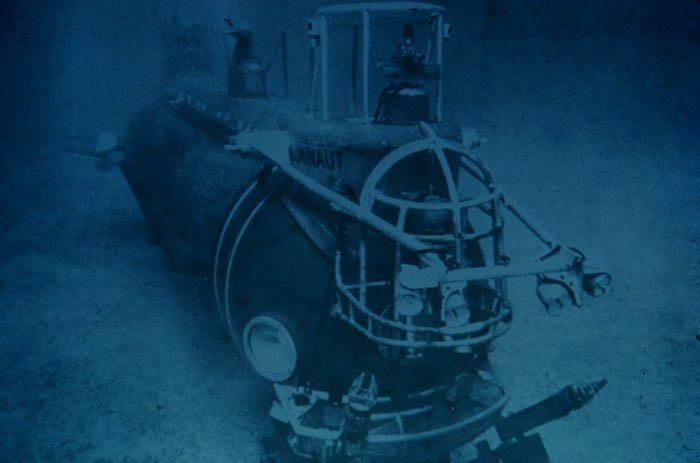The first aluminium submarine ever built was named Aluminaut and launched in 1964. The 80-ton, 15.5-metre (51 ft) crewed deep-ocean research submersible was built as an experimental vessel by Reynolds Metals Company in an effort to highlight the usefulness of aluminium. From 1964 to 1970, the Miami, Florida-based Reynolds Submarine Services, which operated Aluminaut, carried out contract work for the U.S. Navy and other organizations, including marine biologist Jacques Cousteau.
The first aluminium submarine in the world was created by Reynolds in 1964 at the Electric Boat Division of General Dynamics in Groton, Connecticut. The submersible was run by the Miami, Florida-based subsidiary Reynolds Submarine Services Corporation. Aluminaut was big compared to many deep-sea vessels. It had a crew of three and three to four scientists on board and weighed 80 tons. It had four view ports, side-scan sonar, manipulators, active and passive sonar, and a payload capacity of 6,000 pounds (2,700 kg).
Aluminaut is best known for its assistance in the 1966 recovery of a lost unarmed U.S. hydrogen bomb and the 1969 recovery of DSV Alvin, a smaller fellow deep-submergence vehicle that had been lost and sunk in the Atlantic Ocean the year before. At the Navy’s acoustic testing facility in the Bahamas, Aluminaut recovered a 2,100-pound (950 kg) current array torpedo as part of its other work for the U.S. Navy. Films for Jacques Cousteau and Ivan Tors Studios were made with its assistance. While conducting surveys for the U.S. Naval Oceanographic Office, depths of up to 6,000 feet (1,800 m) were attained.
In 1970, the Aluminaut was retired. It is on display at the Science Museum of Virginia in Richmond, Virginia, where Reynolds Metals Company donated it. The submersible is still being maintained though in case it needs to be put back into use.







